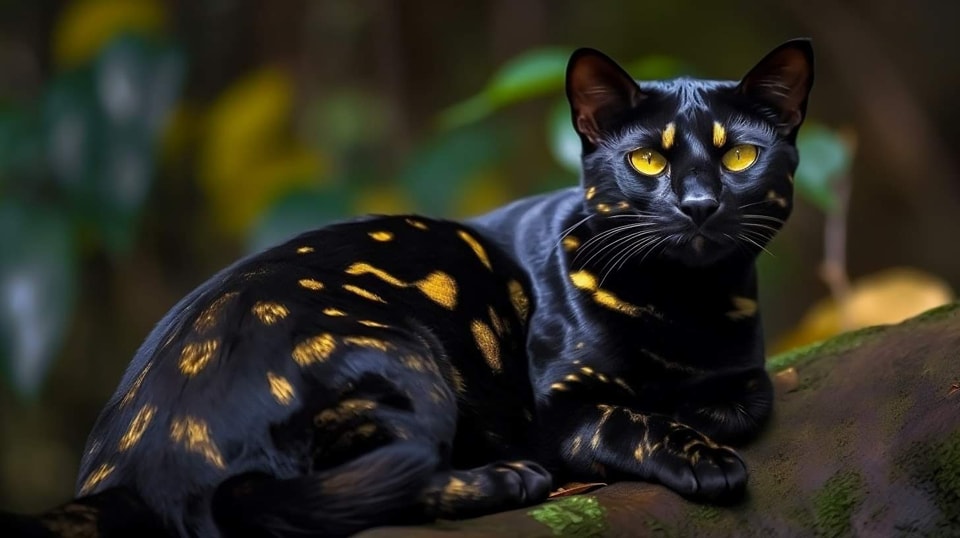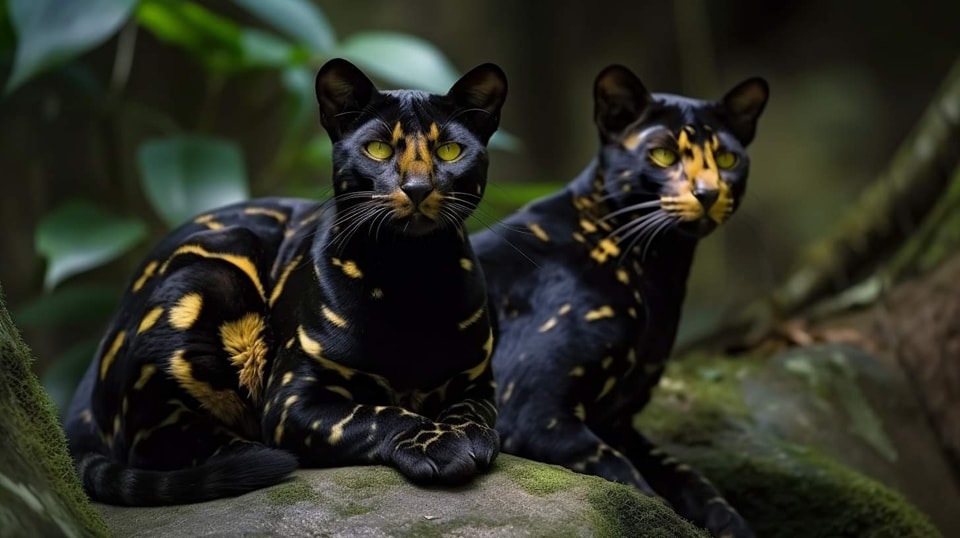Exciting news from the scientific community! A brand new species of wild cat, which goes by the name of Felis Salamandra, has just been uncovered. This particular subspecies is quite rare, as it’s recognized as a type of small Asian leopard and can only be found in the tropical mountains. These felines prefer to live in far-off valleys that are challenging for humans to access, which is why they’ve remained undiscovered until now.

It’s fascinating to note that this finding emphasizes the significance of safeguarding biodiversity and conserving threatened wildlife. Experts are worried about the dwindling population of jungle felines worldwide – particularly in Asia – as their habitat is rapidly shrinking due to actions such as deforestation, poaching, and illicit trafficking of animals.

The Felis Salamandra is a compact wild feline that sports black fur with yellow spots, resembling a Bengal cat. Nevertheless, this type of cat stands apart from Bengal cats and other wild felines, exhibiting several distinct qualities such as long claws and sharp teeth. With its incredible agility, Felis Salamandra is an impressive hunter in its natural surroundings, often seeking out birds and small creatures for sustenance.

Although zoos cannot take in wild animals, scientists have identified certain cat farms that meet health and caregiving standards to nurture these species. By doing so, these rare subspecies can be protected and studied for their behavior and ecology.

The scientific community has made a significant stride with the discovery of Felis Salamandra. This discovery sheds light on the need to preserve biological diversity and safeguard endangered animals. Scientists are optimistic that this breakthrough will spark more extensive efforts to conserve the natural habitats of not just wild cats, but all endangered species.

This particular feline breed is supposedly a product of artificial intelligence, as the tale was circulated on April Fool’s Day. The main goal of the narrative is to increase people’s understanding of the importance of preserving nature and the homes of various wildlife creatures.
